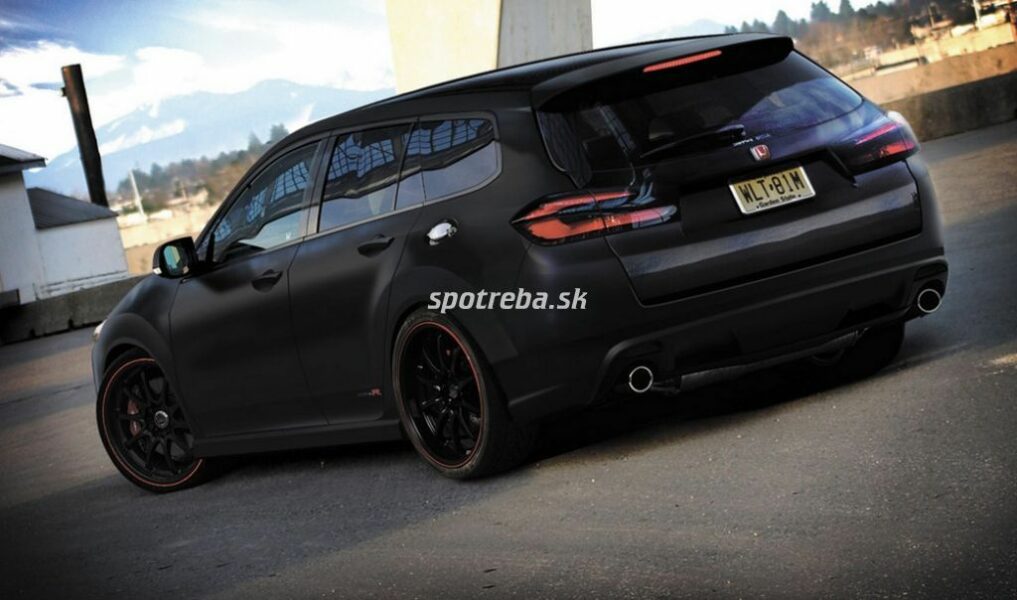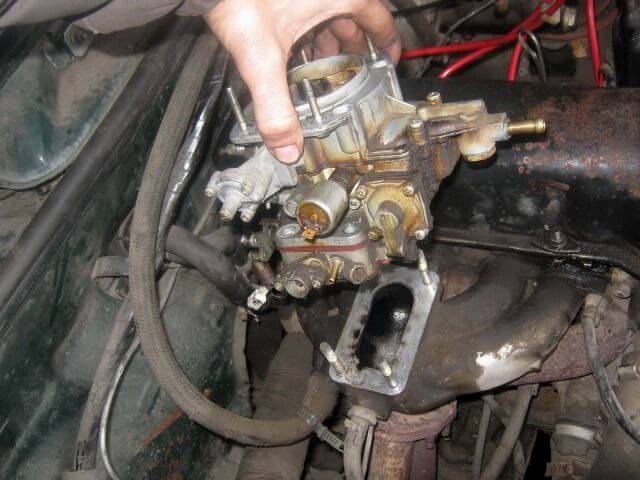
Honda Accord Tourer 2.2 i-DTEC Executive Plus
The word "Tourer" probably doesn't need much explanation; The Tourer is a body version of the Honda van. From here, things get a little more complicated. Yes, this is indeed a new generation Accord in the station wagon version, but a fair difference in the appearance of the rear immediately catches the eye. The first one seemed unusual, the other, maybe even hard or rough, but recognizable from afar in all respects. Well, you say they just turned in a different direction, in the direction of the trend, in the direction that, for example, Avanti or Sportwagoni created for a while. And there is a lot of truth in this.
The rear view of the new Accord is indeed nicer than the previous one, but at the same time it is also closely related to what it covers. The numbers explain a lot; if you read the VDA-measured trunk of the previous Accord Tourer it says: 625/970. In liters. At the time, that meant the Tourer had a huge base trunk, which was 165 liters more than the sedan. Today it reads: 406 / 1.252. Also in liters. This means the Tourer's basic boot is 61 liters less than the sedan today.
Taking into account the above data and the dynamic, fashionable look of the rear end, the connection with Avanti and Sportwagons is logical and understandable. But it’s not over yet. In addition to the base boot being slightly smaller, the increase towards the end is much larger than in the previous Tourer, which in theory would mean that the new Tourer has improved the trunk increase more.
There are quite a lot of data and comparisons in the paragraphs above, so a quick recap would be helpful: the previous Tourer wanted to make it clear that his trunk can eat a lot of luggage, and the current one wants to eat a lot of luggage. they say the luggage is not guarded. he wants to please first of all. Probably mostly Europeans. We have not met anyone who would argue otherwise.
In the back of the van, two more are worth mentioning. First off, behind the wheel, the rear view is a little truncated, as the C-pillars are quite thick. But that's not particularly worrisome. And secondly, that (in the case of the test car) the door opens (and closes) electrically, which requires special care when opening - it is unwise to do this in some low garage. You are probably wondering why.
This Tourer is thus a great example of a mid-size van, which, thanks to the brand's image, is one of the (more or less) prestigious vans that are also made in Sweden or Bavaria, and at the same time has a sporty look. touch. No, the Accord, even this motorized one, is not a sports car, but it does have some distinctive sports elements that don't bother the average user but appeal to those who love sports prowess.
Two things stand out in particular: the transmission control system and the chassis. The shift lever is short, and its movements are precise and informative - with precise information when the gear is engaged. A gearbox with such characteristics is only found in very good sports cars. The same goes for the chassis. The driver has a great sense of control of the wheels while steering and the feeling that the body perfectly follows the turns of the front wheels. Since the Accord is a passenger car with only a slightly sporty character, it also has comfortable cushioning, so it's unwise to afford racing inserts while driving, and sports ones are easy.
The engine torque of this turbodiesel is useful for the driver in dynamic driving, but it is still a quieter version, that is, not a jackhammer. It wakes up a little late as it takes just under 2.000 RPM for good response, it feels good up to 4.000 RPM, and it never seems to be powered by power. It's good that more than one and a half tons of the base mass of the car is also not a cat's cough for all these newton meters and kilowatts.
As we found out in the first test (AM 17/2008), the engine has only one significant drawback: it is noisy. Probably a little bit away from the noise coming from the engine compartment, perhaps the engine is a little more hectic compared to similar products from competitors, but it is definitely pleasant to hear it in the cabin; not as loud as the recognizable diesel, which may not be very appropriate to the brand image.
But it's easy to overhear. The environment in the Accord is adapted to the European and more demanding environment. The neatness of the dashboard goes hand in hand with the looks, and both are supported by the materials – both on the seats and elsewhere in the cabin. At first glance, as well as to the touch, it puts the Accord in a more upscale class of car, and it's a pleasure to sit, travel, ride and drive.
At first glance it seems that there are too many buttons on the (very good) steering wheel, but the driver quickly gets used to their functions, so that he can operate them without looking at the buttons every time with his eyes.
You also need to get used to the camera display, which helps when reversing. Since the camera is very wide-angle (fisheye!), It distorts the image a lot and often feels like it is “not working”. Fortunately, this is better as there is usually enough room before the body meets another object. And if we are right behind the wheel: the sensors behind it are beautiful, clear and correct, but with an interesting look of the dashboard, it seems that the designer tried very hard not to stand out, not to be something special. Nothing special.
If you subtract the differences associated with the transition of the Accord generation and logical (in terms of development), it is still true: the new Tourer is not just a successor to the previous Tourer. In principle, already, but in fact it is a different approach to customers. Better in our opinion.
Vinko Kernc, photo :? Aleš Pavletič
Honda Accord Tourer 2.2 i-DTEC Executive Plus
Basic data
| Sales: | AS Domžale doo |
|---|---|
| Base model price: | 38.790 € |
| Test model cost: | 39.240 € |
| Calculate the cost of auto insurance | |
| Power: | 110kW (150 KM) |
| Acceleration (0-100 km / h): | 9,8 with |
| Maximum speed: | 207 km / h |
| Mixed flow ECE: | 5,9l / 100km |
Technical information
| engine: | 4-cylinder - 4-stroke - in-line - turbodiesel - displacement 2.199 cm? – maximum power 110 kW (150 hp) at 4.500 rpm – maximum torque 350 Nm at 2.000 rpm. |
|---|---|
| Energy transfer: | front wheel drive engine - 6-speed manual transmission - tires 225/45 R 18 W (Continental ContiSportContact3). |
| Capacity: | top speed 207 km / h - acceleration 0-100 km / h in 9,8 s - fuel consumption (ECE) 7,5 / 5,0 / 5,9 l / 100 km. |
| Mass: | empty vehicle 1.648 kg - permissible gross weight 2.100 kg. |
| External dimensions: | length 4.750 mm - width 1.840 mm - height 1.440 mm - fuel tank 65 l. |
| Box: | trunk 406–1.252 XNUMX l |
Our measurements
| T = 19 ° C / p = 1.090 mbar / rel. vl. = 37% / Odometer Condition: 4.109 km | |
| Acceleration 0-100km: | 10,4s |
|---|---|
| 402m from the city: | 17,4 years ( 131 km / h) |
| Flexibility 50-90km / h: | 7,8 / 12,6s |
| Flexibility 80-120km / h: | 9,8 / 18,6s |
| Maximum speed: | 206km / h (WE.) |
| test consumption: | 10,2 l / 100km |
| Braking distance at 100 km / h: | 37,4m |
| AM table: | 39m |
evaluation
In terms of usability, this is the most suitable Accord at the moment - because of the engine and trunk. Therefore, it can be a good family traveler or just a vehicle for everyday activities.
We praise and reproach
overall appearance
interior appearance
chassis
Transmission
engine
interior materials, ergonomics
steering wheel
well-being while driving
Equipment
recognizable engine noise
"Dead" engine up to 1.900 rpm
some hidden switches
warning beeps

